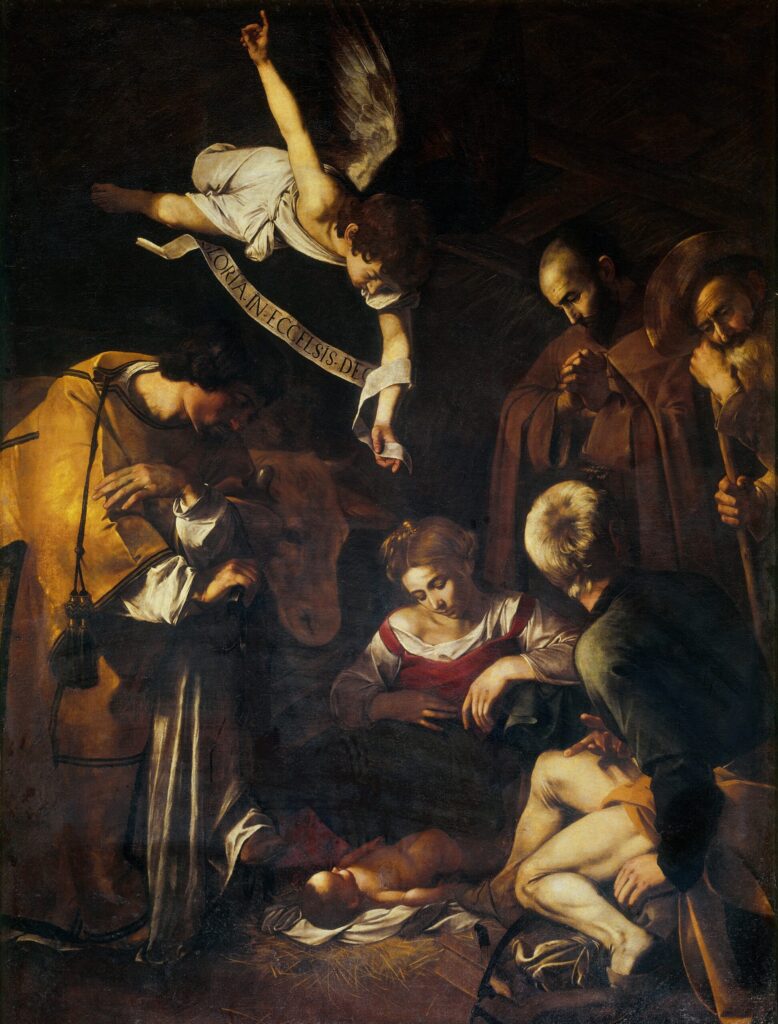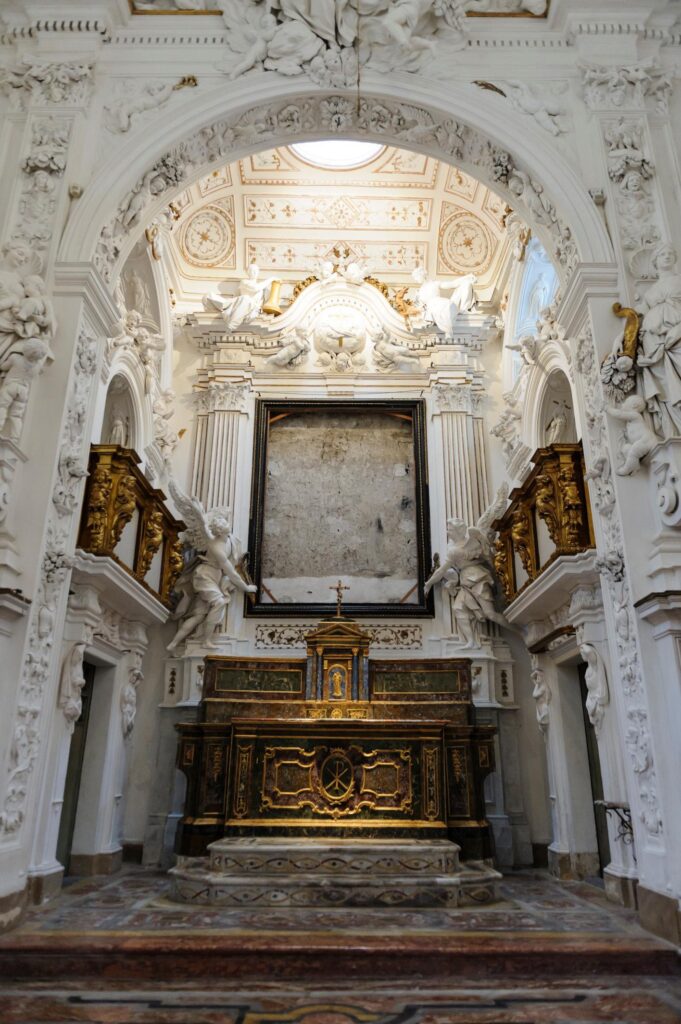
On a dark October night in 1969, thieves entered a small, unguarded church in Palermo, Sicily. Inside, hanging above the altar of the Oratory of San Lorenzo, was a masterpiece by Caravaggio—Nativity with St. Francis and St. Lawrence, painted in 1609. In a matter of minutes, the criminals cut the painting from its frame, rolled it up, and vanished into the night.
To this day, the Nativity has never been recovered.
For over fifty years, investigators, art historians, and journalists have tried to unravel its fate. Some stories point to The Sicilian Mafia, the Cosa Nostra. Over the years, informants and former gangsters have provided tantalizing clues—some claiming the painting was burned, lost, or destroyed, while others suggest it still exists in a private collection or secret vault.
But why was this painting so valuable? And will it ever resurface? To understand, we need to explore the life of Caravaggio, the circumstances of the theft, and the many theories surrounding its disappearance.
Caravaggio
Michelangelo Merisi da Caravaggio was born in 1571 in Milan. He became famous for his bold use of light and shadow (chiaroscuro) and his hyper-realistic approach to religious subjects. He was a genius, but also a man prone to violence, bar fights, and criminal charges.
By 1606, Caravaggio was on the run. After killing a man in Rome, he fled from city to city, painting masterpieces along the way while seeking a papal pardon.
Caravaggio in Sicily
By 1608, he arrived in Sicily, where he was welcomed as a master artist. During this time, he painted several works, including the Nativity with St. Francis and St. Lawrence for the Oratory of San Lorenzo in Palermo.
This was one of his last great works—a large canvas (268 cm × 197 cm) showing baby Jesus lying on a bed of straw, surrounded by the Virgin Mary, St. Joseph, St. Francis, and St. Lawrence. But unlike traditional nativity scenes, this one was dark, gritty, and deeply human, with an almost eerie quality.
A year later, Caravaggio left Sicily, and in 1610, he mysteriously died before reaching Rome. His lost Nativity would become one of the world’s most famous missing paintings.
The 1969 Theft: A Crime Without a Trace
For centuries, Caravaggio’s Nativity hung undisturbed in the Oratory of San Lorenzo. But in the early hours of October 18, 1969, thieves broke in, knowing exactly what they were looking for.
The criminals removed the painting from its frame in total darkness. They cut the canvas from its wooden stretcher, rolling it up for transport – we think this due to the fact a rug from the oratory was also stolen. There were no alarms, no security cameras, and no guards to stop them.
The empty frame was all that remained, a haunting reminder of what had been lost.
Immediately after, however, there was no ransom demanded. This suggests the painting was stolen by those who wanted it, not just wanted to profit from it.
Art historians and law enforcement initially underestimated the loss, unaware that it would become one of the most infamous unsolved art crimes in history. At first, the theft was not even widely reported, with Italian authorities overwhelmed by other mafia-related violence at the time.
So where did the painting go?
It was thought that in the late 1960s, the Cosa Nostra was heavily involved in art theft. Supposedly, stolen masterpieces were used as collateral for drug deals, bribes, or private collections of powerful crime bosses.
Decades after the theft, former Mafia members turned informants provided chilling details. It is worth noting however, that many were interviewed about the painting’s disappearance and there were many conflicting stories given to the police. Some of these suggested:
- In the 1970s, the painting was in the hands of Sicilian Mafia boss Gaetano Badalamenti. It was reportedly stored in a farmhouse where it suffered damage.
- In the 1980s, another informant claimed it was cut into pieces and sold on the black market.
- One account suggested the painting was eaten by rats while in a damp, abandoned house.
- A 1990s testimony claimed it was burned after being forgotten in poor storage conditions.
But every story suggested the same tragic fate: the masterpiece was lost, whether by accident or criminal mismanagement.
The Hunt for the Painting
For decades, Italian authorities, Interpol, and art crime specialists have searched for the Nativity. Unfortunately, the painting is too famous to sell openly, which reduces its chances of appearing. Additionally, no one knows what might have happened to the painting physically – with some reports suggesting it may have been cut into pieces, burnt, or otherwise destroyed. And finally, if there is some mafia connection, the mafia’s code of silence (Omerta) would prevent key witnesses from speaking out.
In 2015 the painting’s theft made it onto the FBI’s Top 10 Art Crimes list, so the efforts to locate still continue.
The Haunting Legacy of the Nativity
For a while, the empty frame still hung in the Oratory – highlighting in a big white, blank square the missing masterpiece.

Since then there has been a high-tech replica, or guest paintings hung there in commemoration of the theft, demonstrating the impact of this lost masterpiece.
Or, is this perhaps another case of the Mona Lisa – more famous for being stolen? They say great artists are never truly appreciated in their lifetime. Perhaps great paintings are never appreciated enough while they are hanging around. Perhaps whoever stole has actually done a service to the world by making us all aware of this beautiful painting.
Or, perhaps not…

Leave a Reply